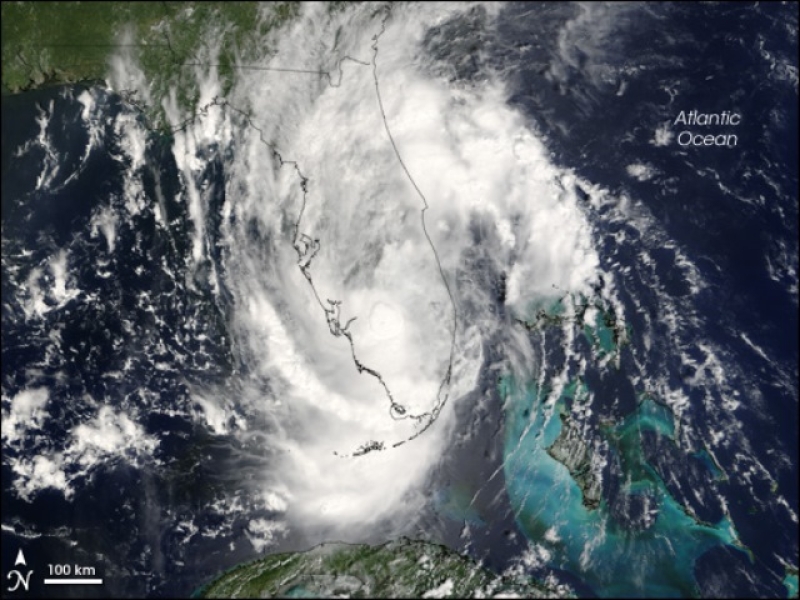- ‘With Science, We Can Feed the World of 9.7 Billion by 2050′ |
- WHO warns of severe disruptions to health services for funding cuts |
- ICJ hears Sudan’s case accusing UAE of ‘complicity in genocide’ |
- Bombardment, deprivation and displacement continue in Gaza |
- Aged and Alone: The hidden pains in old age homes |
Hurricane Ernesto lashes Bermuda with heavy winds and rain

Shelters opened, govt offices closed as Hurricane Ernesto pounding Bermuda with heavy winds & rain
SAN JUAN, Puerto Rico, Aug 17 (AP/UNB) — Hurricane Ernesto began to pound Bermuda late Friday with heavy winds and rain after officials in the tiny British territory in the middle of the Atlantic Ocean opened shelters and closed government offices.
The Category 2 storm located 95 miles (150 kilometers) south-southwest of Bermuda was packing maximum sustained winds of 100 mph (155 kph). It was moving northeast at 13 mph (20 kph).
Ernesto’s large eye will likely be very near or over Bermuda early Saturday morning, with significant coastal flooding expected, according to the National Hurricane Center.
“Preparations to protect life and property should be rushed to completion,” the center said.
The storm was forecast to dump between 6 to 9 inches of rain. Forecasters noted that Ernesto was a large hurricane, with hurricane-force winds extending up to 75 miles (120 kilometers) from the center and tropical-storm-force winds extending up to 275 miles (445 kilometers).
In preparation for the storm, officials in the wealthy British territory suspended public transportation and closed the airport on Friday night.
National Security Minister Michael Weeks warned of dangerous weather conditions starting late Friday, with more than 14% of customers already without power.
“Hurricane Ernesto seriously threatens our community,” he said. “This is not a storm to be taken lightly.”
Dangerous surf and rip currents are also possible on the Turks and Caicos, the Bahamas and Atlantic Canada during the next few days, according to the center.
Ernesto was forecast to be near or east of Newfoundland by Monday night.
Bermuda is an archipelago of 181 tiny islands whose total land mass is roughly the size of Manhattan.
According to AccuWeather, it’s uncommon for the eye of a hurricane to make landfall. It noted that since 1850, only 11 of 130 tropical storms that have come within 100 miles (160 kilometers) of Bermuda have made landfall.
The island is a renowned offshore financial center with sturdy construction, and given its elevation, storm surge is not as problematic as it is with low-lying islands.
Ernesto previously battered the northeast Caribbean, where it left hundreds of thousands of people without power or water in Puerto Rico after swiping past the U.S. territory as a tropical storm.
More than 180,000 out of nearly 1.5 million clients were still without power more than two days after the storm. Another 170,000 were without water as the National Weather Service issued yet another severe heat advisory, warning of “dangerously hot and humid conditions.”
“It’s not easy,” said Andrés Cabrera, 60, who lives in the north coastal city of Carolina and had no water or power.
Like many on the island, he could not afford a generator or solar panels. Cabrera said he was relying for relief only “on the wind that comes in from the street.”
Officials said, they hoped to restore power to 90% of nearly 1.5 million customers in Puerto Rico by Sunday, but have not said when they expect power to be fully restored.
Of 152 locations of critical infrastructure without electricity that are being prioritized, 36 now have power, said Juan Saca, president of Luma Energy, a private company that operates the transmission and distribution of power on the island.
In the neighboring U.S. Virgin Islands, crews also were working to restore power, with 80% of customers back online.
Ernesto is the fifth named storm and the third hurricane of this year’s Atlantic hurricane season.
The National Oceanic and Atmospheric Administration has predicted an above-average Atlantic hurricane season this year because of record warm ocean temperatures. It forecast 17 to 25 named storms, with four to seven major hurricanes.

